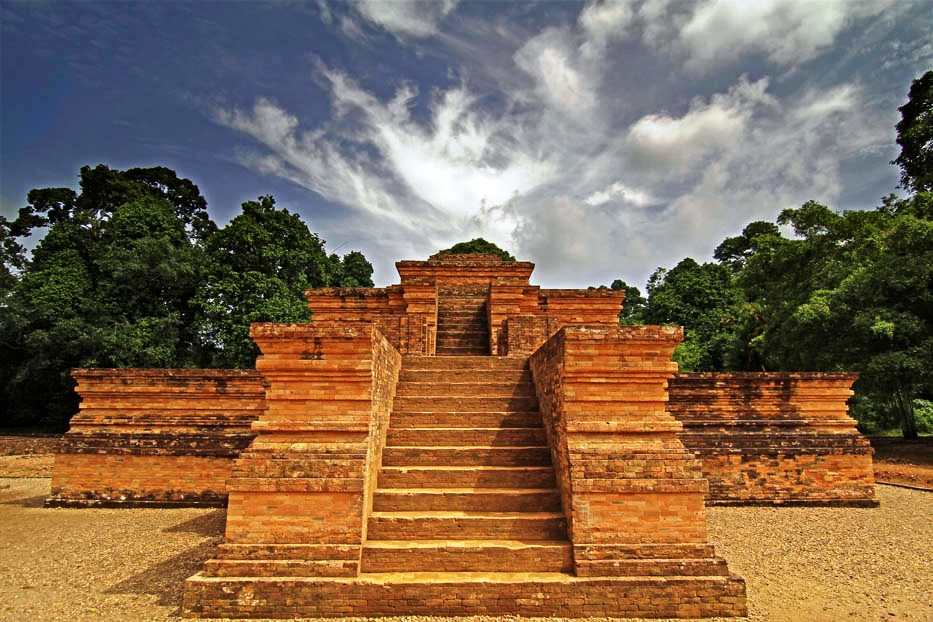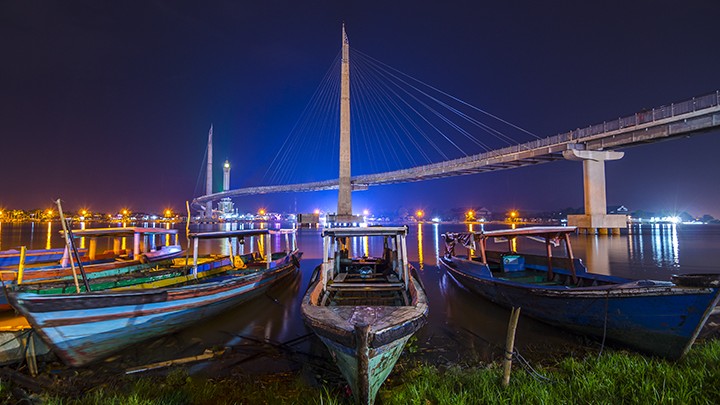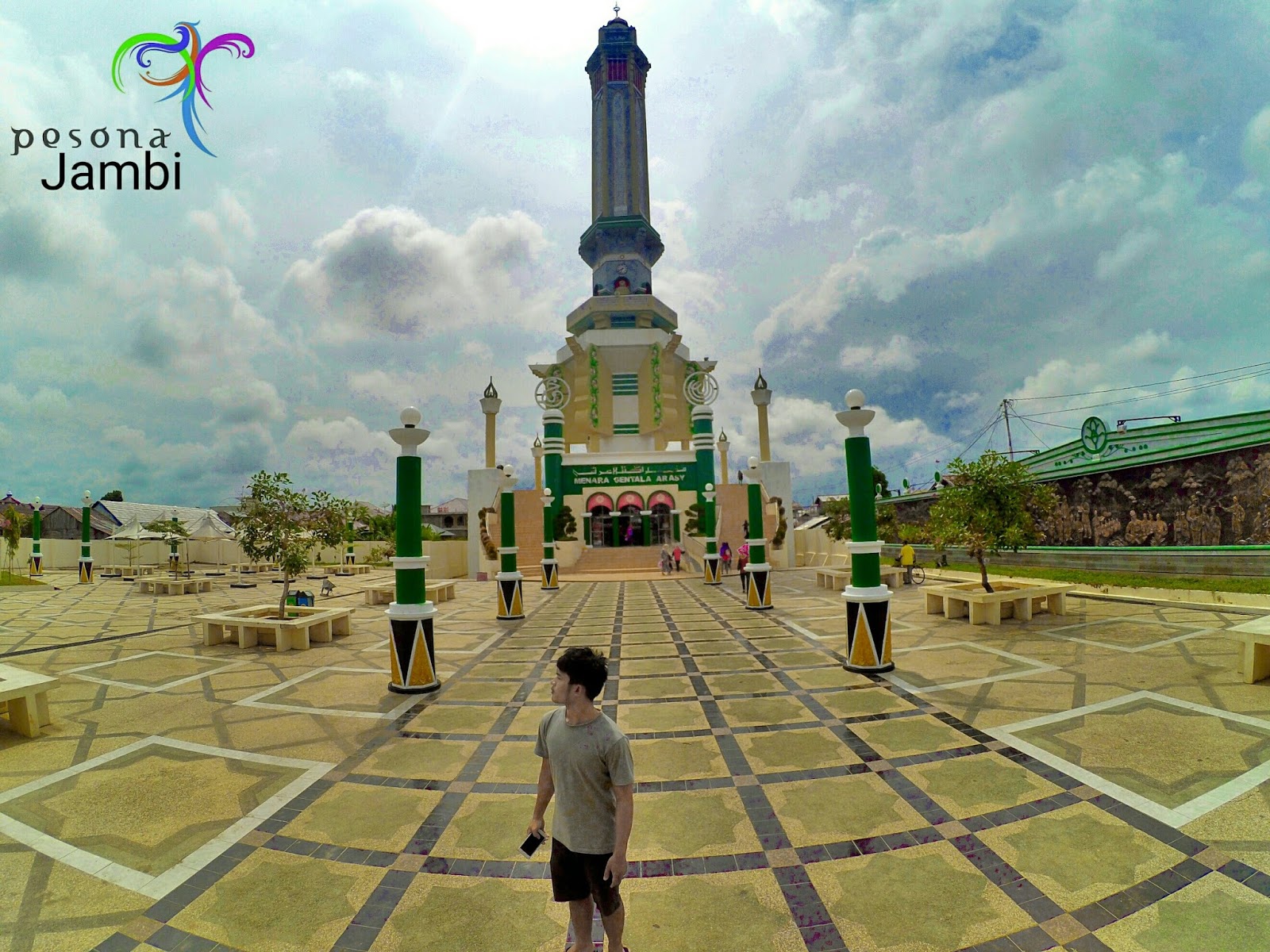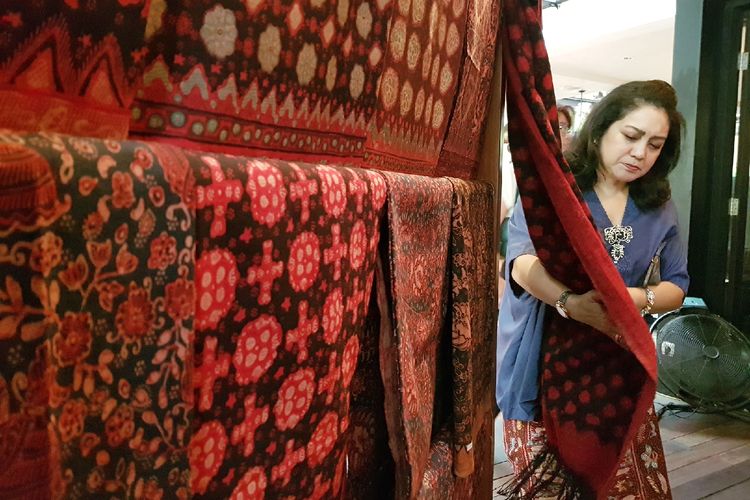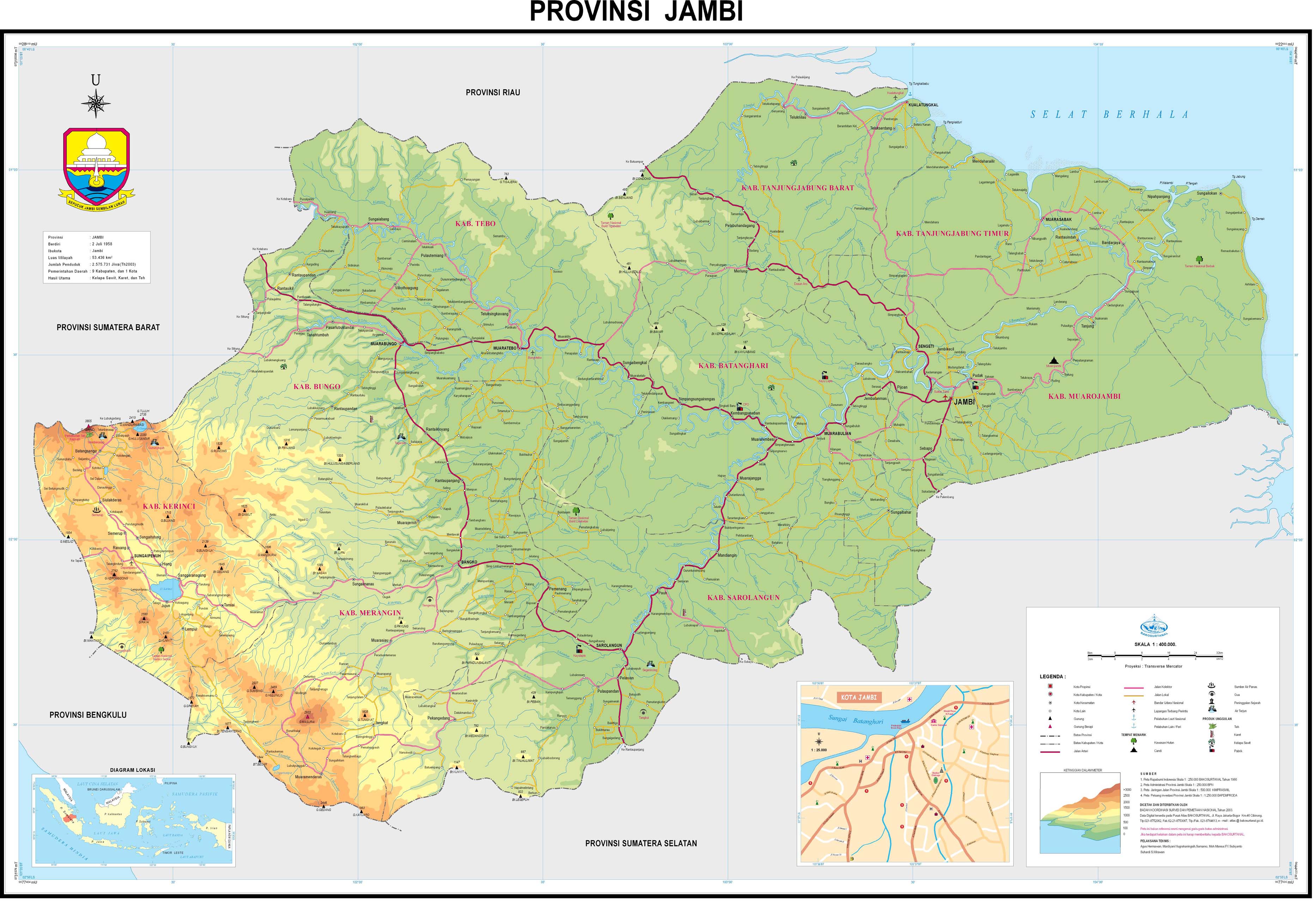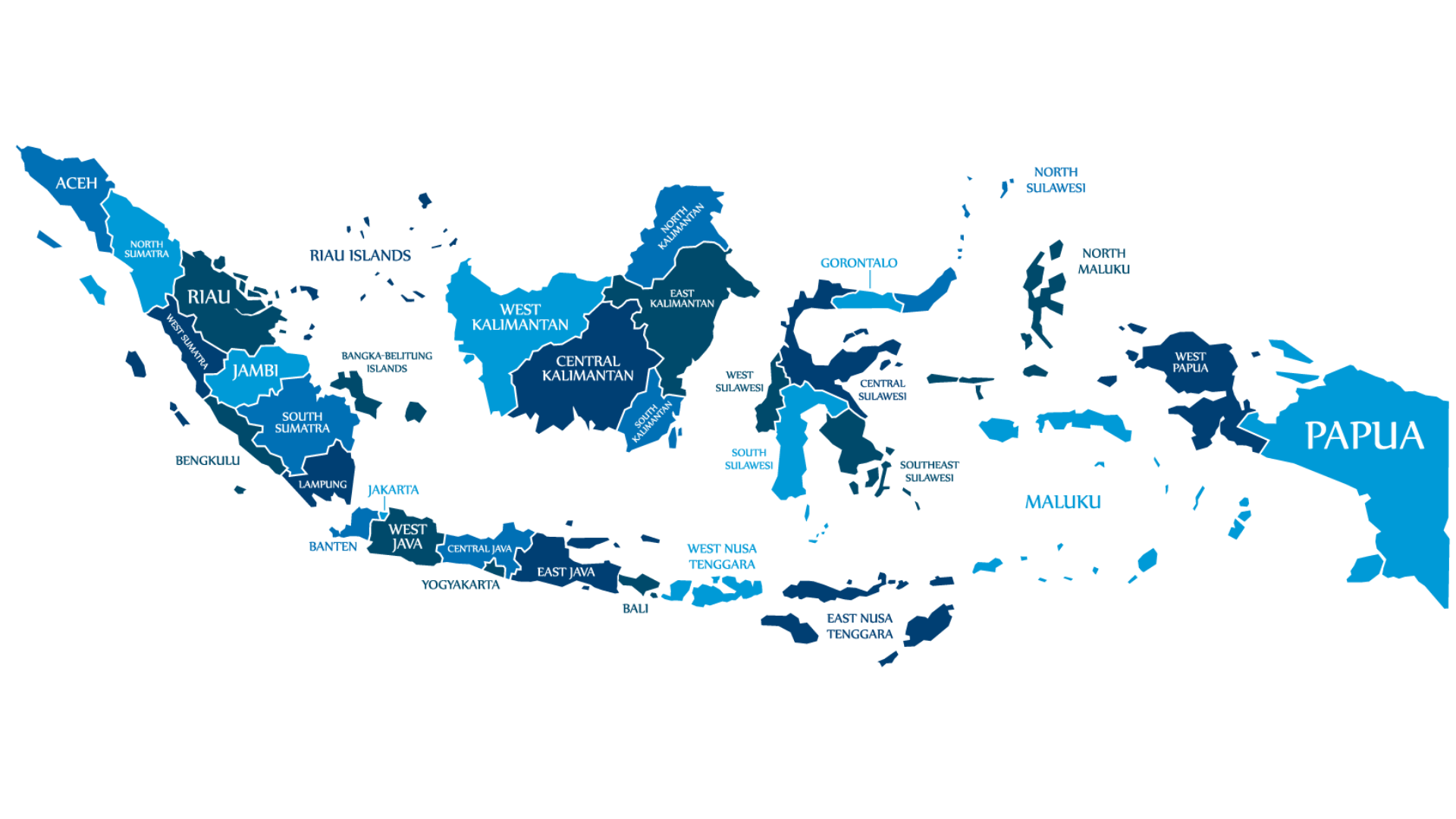Home / Batik Regions – Western Indonesia – Southern Sumatra – Jambi
Facts of the region
Discover Batik in Jambi
The Batik Handwritten Textile in Sekoja Gallery, Jambi City (photo: Pesona Indonesia)
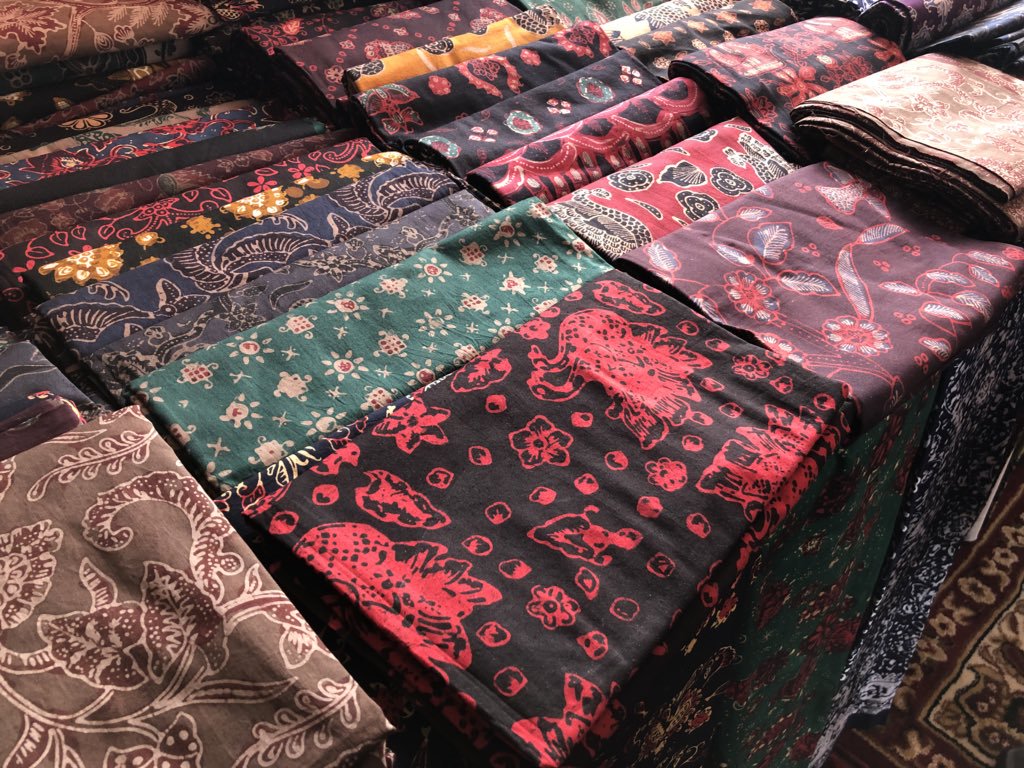
Variety of Batik textiles in Jambi (photo: Ministry of Industry)
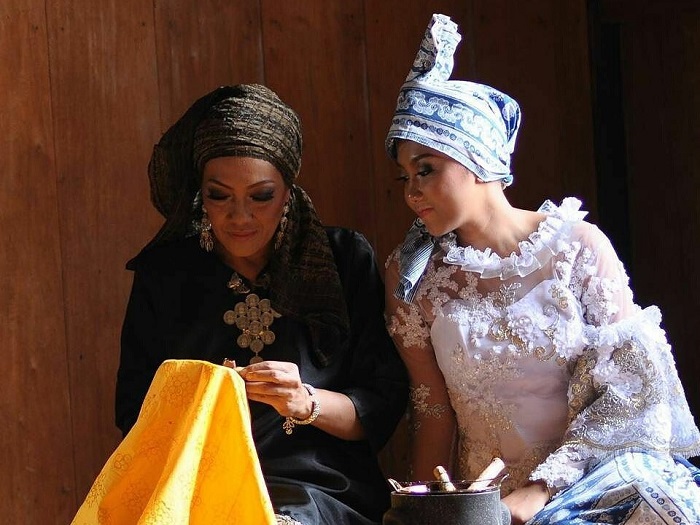
Ms. Azmiah, the figure behind the development of Jambi Batik Workshop (photo: puan.id)
The Canvas of Batanghari River
Batik is a special textile heritage, which, in ancient times can only be owned by royal or noble families in Jambi. With the rupture of the dynasty of the sultanate of Jambi, batik production of Jambi declined dramatically. Since 1980, the development of Jambi batik has increased rapidly. The use of Jambi batik is no longer limited to certain social circles. Jambi batik has unique and exotic characteristics, both in terms of color and pattern.
Socio-Cultural Values of Batik in Jambi
Jambi received influence from Arabic and Chinese cultures during the era of the Jambi empire in the 16-17th Century. Those influences can manifest in the variety of calligraphy and motifs of its batik textiles. The main motifs of Jambi Batik illustrate the original character of the Jambi Malay community, which is very simple, uncomplicated and tends to be conventional. Some of the batik-producing regions in Jambi include Jambi City, Batanghari, Soralangun, Merangin, Tebo, and Bungo.
Natural Based Textile Arts
Most Jambi batik production uses natural ingredients made by the mixture of various woods and plants, such as Lambato sap and fruit of Bulian wood, pandanus leaves, tinggi wood, Sepang wood, and Nila Leaves that come from other provinces.
Jambi batik is also rich in various motifs with bright colors as a symbol of the joy and cheerfulness of the Jambi community. More than 31 batik motifs were recorded. Those motifs can be found in the estuary of the Jambi temple, such as Pucuk Rebung (bamboo shoots), Angso duo with winged crown, crescent moon, Mango, Antlas (tendril motifs), Clouds, and Riang-Riang.
Batik Motifs in Jambi
Batik Villages in Jambi
local batik workshop
Batik villages are the region where the Batik producers mostly reside. You could buy the Batik textiles from the artisans and participate in the making process of Batik on the site.
JAmbi
Visual Journey
in 1 Minute
Batik production in Jambi
The Land of Culture Paradise
JAmbi
The Muara Jambi Buddhist Temple (photo: Indonesia.travel)
About Jambi Province
Jambi Province was the cultural center of two major kingdoms that had flourished in this region, namely Malay Kingdom in the 14th Century and Jambi Kingdom in the 16th Century. Jambi is not only known for its natural tourism but also it has a rich cultural diversity shown by its cultural heritage sites and annual local festivals. Visitors can visit Karang Berahi historical site, the Muaro Jambi Temple, the tombs of the kings, and a lot of Buddhist shrines in the city.
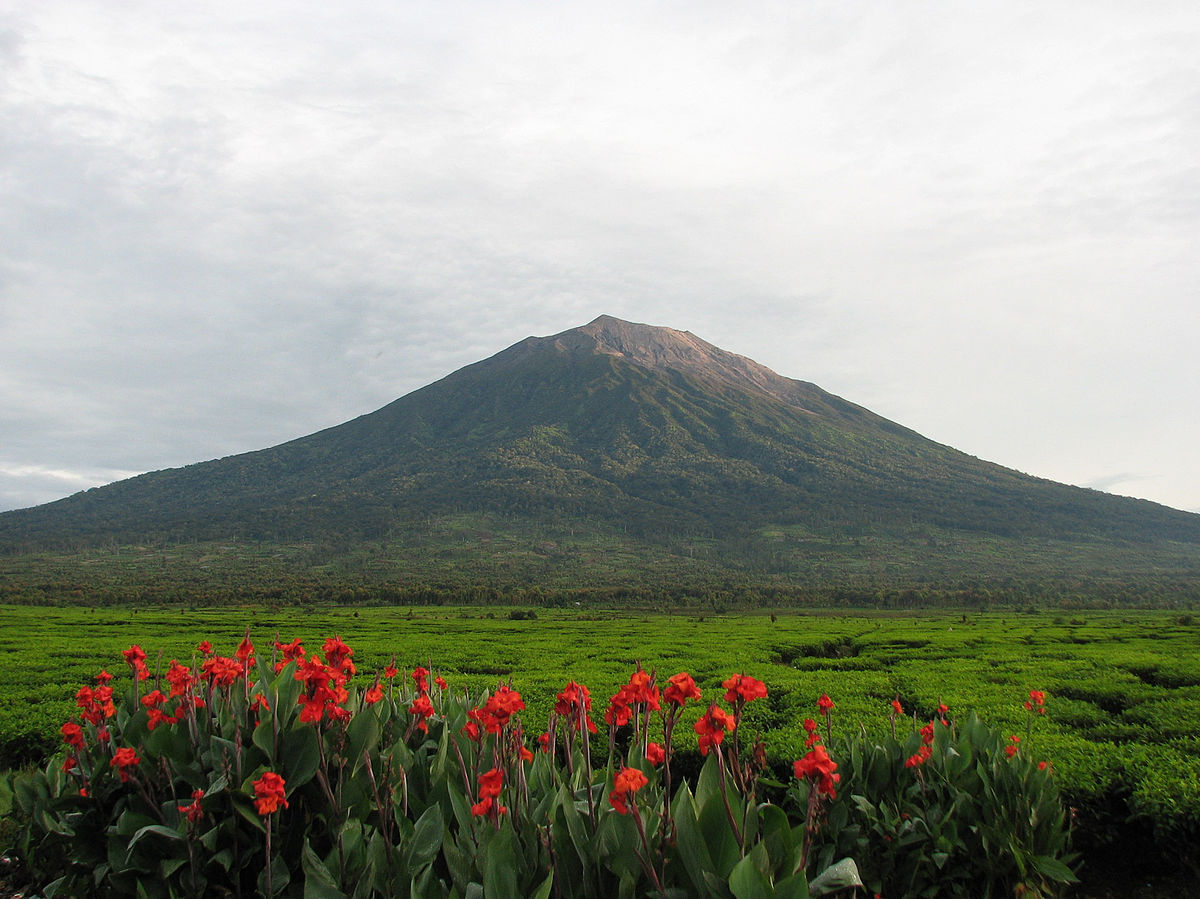
Facts about Jambi
Located on the east coast of central Sumatra, Jambi Province has an area of 53,435.72 km2. The total population of Jambi is 3,570,272 inhabitants with 98% of Muslim population.
Jambi has two prominent natural landscapes in Sumatra Island: the Batanghari river and Mount Kerinci. The Batanghari river spreads at least 800 kms long, the longest river in Sumatra. The peak of Mount Kerinci stands at an altitude of 3,805 meters above sea level, which is the highest volcanic mountain in Indonesia. This mountain lies in the Kerinci Seblat National Park area which is the natural habitat of protected Sumatran tigers and Sumatran rhinoceros.
From the peak of Mount Kerinci, visitors can see beautiful panoramic views of the Jambi city, and cities in neighboring provinces such as Padang and Bengkulu. (Photo: Mount Kerinci, Wikipedia)
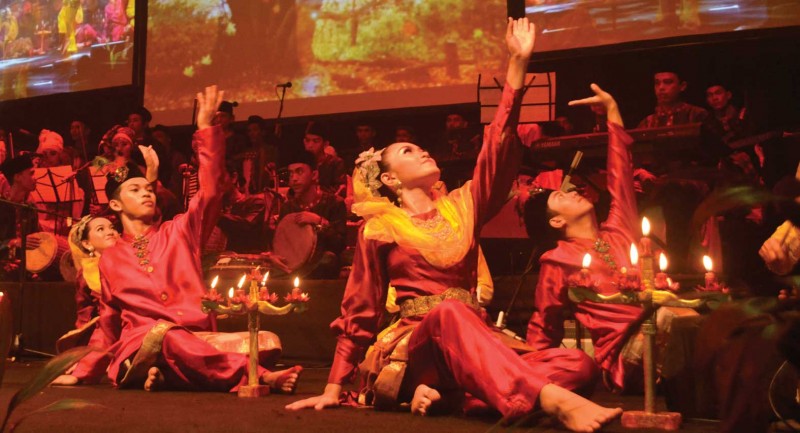
Highlights on Culture and History
Jambi has a big population of the Malay Muslim community. Islamic culture is more accentuated in most of its tangible and intangible cultural heritage. However, the local people still preserve and maintain some traditions and festivals which were created during the Hindu and Buddhist era back in the 7-15th Century. These traditions are reflected in various forms such as giving offerings at the holy places, burning incense, and traditional ceremonies for religious purposes. Long before the age of these kingdoms, the territory of Jambi was inhabited by prehistoric humans. (Photo: Jambi Inai Dance @Hendro)
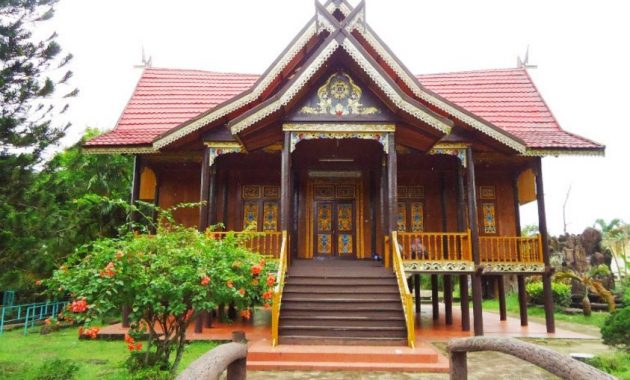
Traditional House of Jambi
One of the authentic cultural heritage sites that describes the identity of the Jambi Malay community is the traditional house called Panggung Kajang Leko. Visitors could discover the cultural villages of Jambi which offer a myriad of exquisite living experiences with the locals and learn their local wisdom in cultivating the wonderful nature in a whole package (Photo: Jejak Piknik)
Tourist Attractions in Jambi
